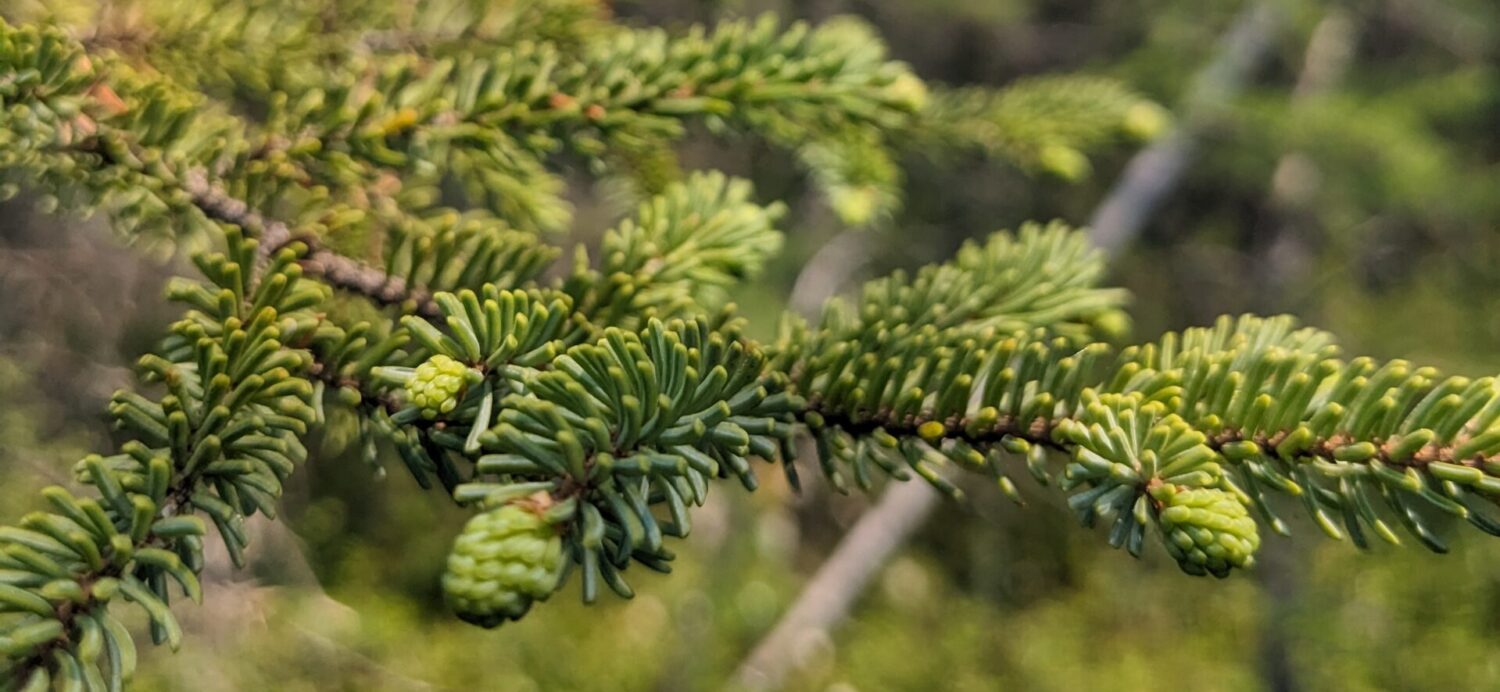When we hear about extinct species, it’s usually in reference to animals, and most often large vertebrates. What we hear about far less often is the extinction of plant species, and specifically extinct trees.
But is this because few plants actually go extinct?
No. In fact, a recent article has documented the extent of recognized plant extinction in the US.
In this article, I want to highlight what is known about tree species that have become extinct and share the story of a recently rediscovered species.
A ‘Very Curious Tree’
In the late 1700s, a naturalist and botanist named William Bartram traveled across much of the American southeast. Throughout these excurions he collected and identified many of the plants species of the region.
During a trip through the Altamaha River Valley in southeastern Georgia, he recorded a ‘very curious tree.’ In describing this new species in his published journal, he wrote:
“…the tree grows fifteen or twenty feet high, branching alternately; the leaves are oblong, broadest toward their extremities, and terminate with an acute point, which is generally a little reflexed;[…] the flowers are very large, expand themselves perfectly, are of a snow white colour, and ornamented with a crown or tassel of gold coloured reflugent staminae in their center…”
Bartram initially identified the tree as belonging to the genus Gordonia, due to its resemblance to Gordonia lasianthus. However, after further inspection he “found striking characteristics abundantly sufficient to separate it from that genus…” (This explains the mislabeling on the featured image above.)
The final name given the tree is Franklina alatamaha (Franklin tree), the only species in that genus. Bartram named the tree after “the illustrious Dr. Benjamin Franklin.”
Bartram collected seeds from the tree to cultivate and to send off to London.
Today, the tree is extinct in the wild, yet survives as a cultivated plant in botanical gardens and arboreta around the world.
In fact, all living specimens of the tree originate from the seeds Bartram initially collected.
Extinct Trees: Hawthorns
There are four known species of hawthorn tree that are currently classified as extincted. They include Crataegus fecunda, C. austromontana, C. delawarensis, and C. lanuginosa.
Like the Franklin tree, each of these species had very limited distribution ranges. C. fecunda has not been seen since the 1930s.
C. austromontana was original discovered in Valley Head, Alabama (hence its common name, Valley Head hawthorn).
As its specific epithet suggests, C. delawarensis was only found in a small pocket of northern Delaware.
C. lanuginosa was first described in the early 1900s in Jasper County, Missouri, but has not been recorded since 1957.
These hawthorn species may have become extinct due to their limited range, but also their ability to hybridize with other hawthorn species.
But sometimes, extinct trees don’t stay extinct.
Found, Lost, Then Found Again
Quercus tardifolia was first recorded in the mid-20th century in a remote mountainous region of Big Bend National Park in Texas.
One of the few evergreen oak species, Q. tardifolia (lateleaf oak) was thought to be extinct as several recent attempts to locate it in the wild have remained fruitless. Excursions as recent as 2018 have returned without any sightings of the tree.

But that changed during the spring of 2022 when a dedicated group of botanists traversed remote sections of the National Park in search of the tree. On the third day of their search, they found what they were looking for.
Standing 30 feet tall, with characteristic thick hair on the underside of its leaves, the researchers knew this was the right tree.
Now scientist are racing to collect seeds and study the causes of this tree’s threatened status. Fungal infection may be a contributing factor as well as the tree’s willingness to hybridize with other oak species within it’s range.
When I first started researching for this article, I didn’t realize that a specimen of the lateleaf oak had been found in the wild. So, this was an exciting story to uncover.
Are there any extinct species I missed? Do you think endangered species with very small spatial distributions are worth saving? Share your thought in the comments below!
Featured Image: oldbookillustrations.com
Recommended book: Travels of William Bartram, 1928. Ed: Mark Van Doren.
*As an Amazon Associate, I earn from qualifying purchases.*

